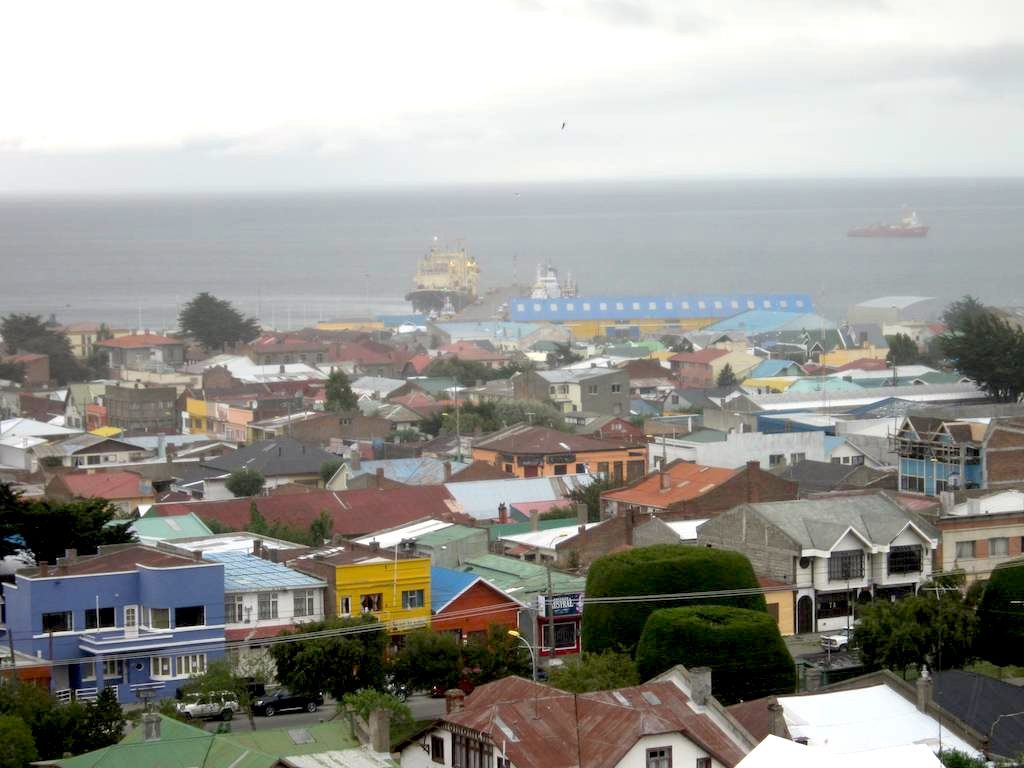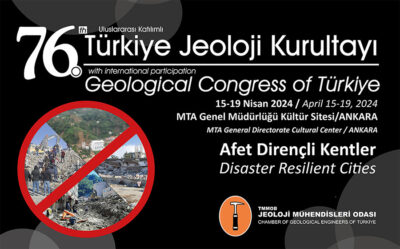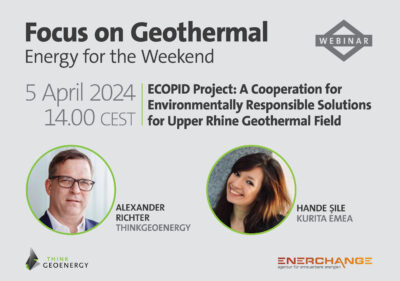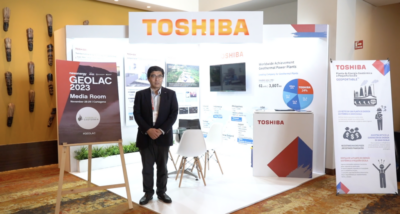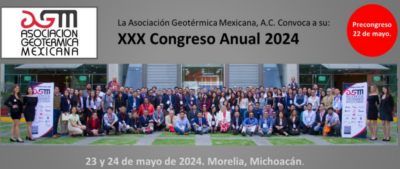Potential highlighted for geothermal heating in Magallanes, Antarctic region of Chile
Geothermal energy could be a great source for heating projects in Magallanes and the Antarctic region in the southern tip of Chile, as highlighted by a recent international seminar.
A recently held international seminar on geothermal and district heating highlighted the potential of geothermal heating in the Antarctic region of Magallanes, in the far south of Chile.
The meeting discussed the geothermal potential of Magallanes and its projection for district heating, important and recognized exponents of the subject at a national and international level.
The meeting brought together speakers from the Ministry of Energy, UN Environment, Center of Excellence in Geothermal Energy of the Andes (CEGA, U. of Chile), ENAP and Energy Llaima – Arcon SunmarK (Denmark), who together with regional authorities headed by the Governor of the Antarctic province, Juan José Arcos, the mayor of the municipality of Cabo de Hornos, Patricio Fernández, public services and private companies linked to the sector, among others, also commented on successful cases of district heating as possible examples to replicate in the region.
In this context, Ministerial Regional Secretary of Magallanes and the Chilean Antarctic, Natalia Easton praised the organization and massive attendance at the seminar that attracted the interest of the public sector, the private sector, academia and international cooperation.
“As the Government of President Sebastián Piñera, we are very happy and proud to be leading this energy transformation, which is very necessary for the country, with the help of all the actors who are called to contribute to this change. Today we saw the reflection of it; of the marked social seal that the Minister of Energy, Susana Jiménez, is printing the process, as a fundamental part of the Energy Route 2018 – 2022, “she remarked.
“We are noticing that the sum of wills, begins to bear fruit and strengthen joint work, with the main objective of improving the quality of life of all Chileans and, along with this, take another step in the task of protecting the planet and the region, diversifying our energy matrix, making it more sustainable thanks to the use of geothermal resources are offering us. This scenario is undoubtedly a fascinating ‘Journey to the Center of the Earth, “Easton stressed.
Specialists in Geothermal
For his part, the Governor of the Antarctic province, Juan José Arcos, also valued the appointment due to the importance it has to advance towards a lower dependence on fossil resources and firewood.
“We believe that in this process that is leading the Energy Secretariat, the geopolitical concept that President Piñera wanted to print is reinforced. The proposal of Energía Magallanes is absolutely new; where we jump from pre-history in heating, to the 21st century, because this [geothermal energy] is the energy of the future. This speaks of serious work and places Puerto Williams and the Antarctic province in their rightful place. I think we can make a qualitative leap in terms of energy diversification, “said Governor Arcos.
“This virtuous triangle that we have seen today where public, private and academic converge goes in the direction of improving the quality of life of people and that is very motivating. I see that the Government’s will on this issue is surprising. Minister Jiménez has a guide, Route 2018 – 2022 that I read and I found a very interesting bet.
“I felt that the minister wants to give a seal to her management and that stamp has almost the word geothermal written on it; the availability that we have found as CEGA with the Ministry of Energy is impressive; before that did not exist; I think it has been improved a lot, “said Dr. Diego Morata, speaker and Director of CEGA – U. de Chile.
Finally, Morata projected that Magallanes could already have systems of this type working by 2025 . And from here to 20 years to Punta Arenas district heated with geothermal energy.
Puerto Williams: Pilot for District Heating
“I have been surprised by the level of knowledge about district energy that regional authorities have, since it is not such a common topic. This allowed to enhance the potential of District Heating in the integration of renewable energies in this seminar; and to elevate the conversation between the representatives of the political, private, academic world and us as international cooperation, “said Pilar Lapuente, National Technical Coordinator for the Environment.
“Today we are evaluating several technological solutions for Puerto Williams, which appears as a priority. Among them – and runs with advantage – is geothermal. In this scenario, the evaluation will begin in March with funds from the World Bank to end from about the middle of the year; and after that, make a district heating system for Williams complete, contributing in this way to have an energy matrix that is diverse, robust, resilient and autonomous, “he continued.
Meanwhile, the Head of the Geothermal and District Energy Unit of the Energy portfolio, Rubén Muñoz, coincided with Lapuente, pointing out that in Chile there is a great opportunity for the development of district heating through the use of local resources such as geothermal, solar energy and biomass, allowing to diversify the energy matrix of cities, achieve energy independence and making more efficient use of resources.
“In the Government of President Piñera, the Ministry of Energy has taken a leading role to promote district heating in Chile, collecting the demands of the citizens of the southern area in the process of preparing the Energy Route.” In this sense, Muñoz explained that Energy Route 2018 – 2022, in Axis 6: Energy Efficiency, there are 3 actions committed that will facilitate the implementation of district heating projects:
- Develop information tools that guide decision making and implementation of projects.
- Establish proposals for a regulatory framework to facilitate the entry of this technology into cities.
- Support for the development of pilot projects to demonstrate the series of benefits that would bring to citizens in terms of energy and air quality.
“With the support of international organizations such as the UN Environment and the World Bank, we intend to capture the expertise of countries with decades of development to expand district heating in Chile, enabling technology and technical support for their development in our country,” he concluded.
Geological Background
Magallanes was a volcanic region long ago. Proof of this are the more than 1,800 craters in the Pali Aike sector. There are findings of thermal springs in the Skyring Sound.
Exhibitiors and Assistants
The meeting, which was broadcast via Facebook Live and supported by Enap, brought together more than 70 people from the regional, national, international cooperation, public services, private sector and academia.
They exposed: Rubén Muñoz, Head of Geothermal and District Energy Unit, Ministry of Energy, Government of Chile; Felipe Mellado, professional District Geothermal and Energy Unit, Ministry of Energy, Government of Chile; Pilar Lapuente, National Technical Coordinator for the Environment; Energy Llaima – Arcon Sunmark (Denmark); Dr. Diego Morata, Director Center of Excellence in Geothermal Energy of the Andes, University of Chile (CEGA) and, Jesús Pinto, Senior Geologist, Exploration Management, ENAP.
District Energy
Understood as those systems of distribution of heat and cold by means of underground pipes in urban sectors, it clearly emerges as a possibility of substantial improvement of the quality of life of our citizens.
Geothermal Potential in Chile
The generation capacity in Chile is 25 thousand MW, of which 0.2% comes from geothermal energy.
Some of the conclusions reached by the Geothermal Bureau, a public-private entity promoted by the Ministry of Energy, are: Chile has sufficient exploration to calculate the technically exploitable potential of the explored areas between 1,300 MW and 3,800 MW, with a range of investments between US $ 9 and US $ 25 billion.
72% of the geothermal potential for electricity production is concentrated in the Arica and Parinacota, Tarapacá and Antofagasta regions and the other 28% is distributed in the existing mountain range between the Metropolitan Region and Los Lagos.
It is worth mentioning that, our country concentrates more than 25% of the active volcanoes in the world.
Source: Radio Polar
